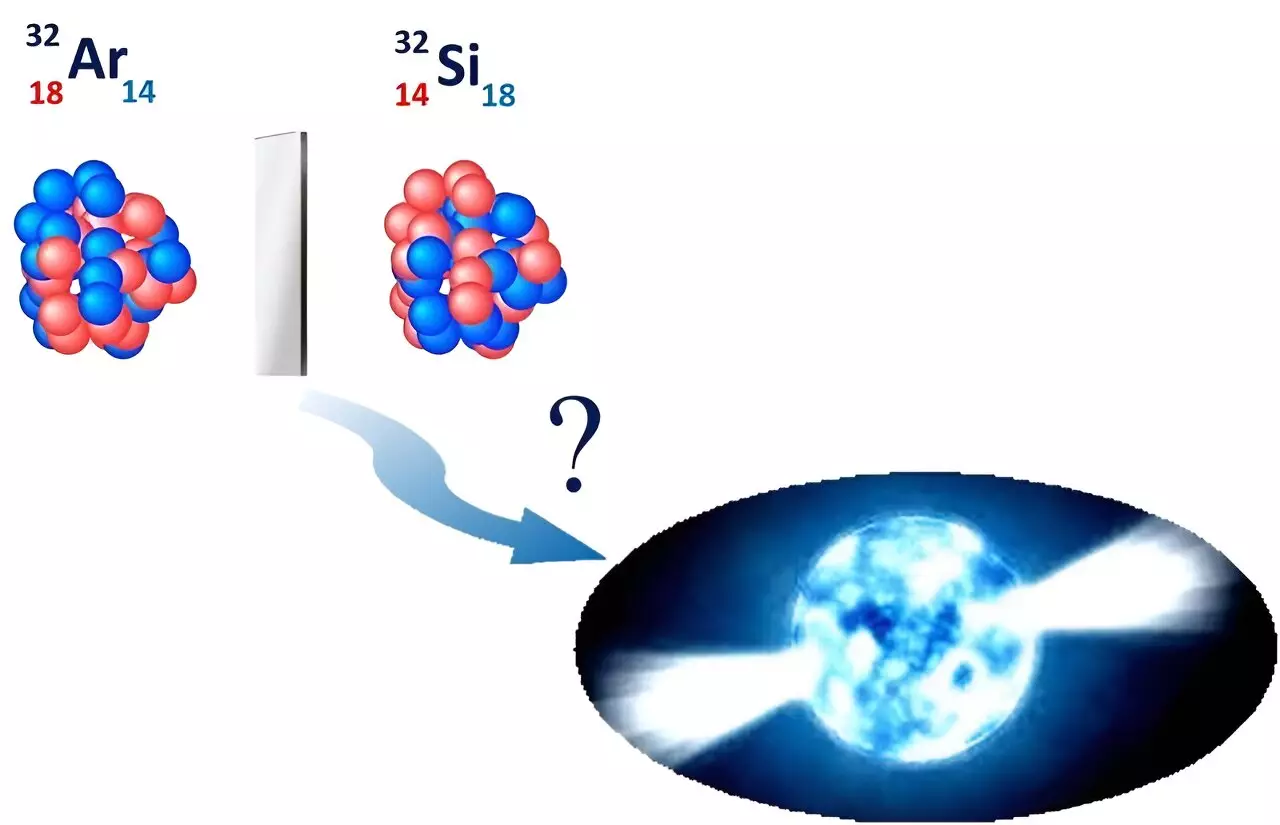When it comes to studying nuclear physics, adding or removing neutrons from an atomic nucleus can have a significant impact on the size of the nucleus. These changes in size result in what scientists refer to as isotope shifts, which in turn affect the energy levels of an atom’s electrons. By making precision measurements of these energy shifts, researchers are able to determine the radius of the nucleus of a specific isotope.
In a recent study published in the journal Physical Review Letters, scientists conducted laser-assisted measurements to determine the nuclear radii of several silicon isotopes. These included silicon-28, silicon-29, and silicon-30, as well as the unstable silicon-32 nucleus. By comparing the radius of silicon-32 to its mirror nucleus, argon-32, researchers were able to establish limits on various parameters that play a role in understanding astrophysical phenomena like neutron stars.
Challenges in Nuclear Theory
Despite advancements in nuclear theory, researchers continue to face challenges in fully comprehending the behavior of atomic nuclei. One major hurdle is the disconnect between the description of nuclear size and the theory of the strong nuclear force. Additionally, there are uncertainties surrounding whether existing nuclear models can accurately portray nuclear matter, a unique form of matter made up of interacting protons and neutrons.
Precision measurements of charge radii, such as those obtained through laser spectroscopy, offer valuable insights into these longstanding questions. By analyzing the differences in nuclear radii between isotopes like silicon-32 and its mirror nucleus argon-32, scientists can better understand the properties of dense neutron matter found in extreme environments like neutron stars. This information is crucial for refining nuclear theory and enhancing our knowledge of astrophysical phenomena.
The recent study on silicon isotopes conducted at the BEam COoler and LAser spectroscopy facility marks a significant milestone in the field of nuclear physics. By utilizing laser-assisted measurements to determine nuclear radii, researchers have not only advanced our understanding of atomic nuclei but have also provided important insights into the properties of nuclear matter. This work serves as a critical benchmark for the development of nuclear theory and has implications for astrophysics, particularly in the study of neutron stars.


Leave a Reply